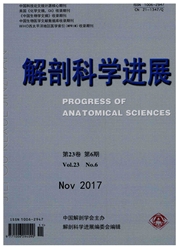

 中文摘要:
中文摘要:
目的 探讨血清miR-34a对乳腺癌新辅助化疗疗效的预测价值。方法 本研究包括78名确诊的原发性乳腺癌患者和30名健康志愿者。每位患者在化疗开始前,第二个周期结束和新辅助化疗结束时抽取6ml静脉血。实时定量PCR检测血清miR-34a的表达,其与化疗响应的关系被分析。结果 血清miR-34a的表达水平在乳腺癌患者化疗开始前显著高于健康志愿者。在治疗有效组和无效组,血清miR-34a的表达水平在化疗开始前,两周期结束时和化疗结束时均无显著差异。而血清miR-34a表达水平的变化是与治疗反应显著相关的。在治疗有效组,患者的血清miR-34a水平在化疗第二周期后和化疗结束时均低于化疗开始前(P=0.023和P=0.036),而无效组无显著变化。ROC曲线显示血清miR-34a表达水平的变化能准确地预测新辅助化疗的疗效。结论 血清miR-34a是一个新的、非侵入性的生物标记物,能够准确地预测乳腺癌新辅助化疗的疗效。
 英文摘要:
英文摘要:
Objective To investigate the predictive value of serum miR-34a expression for the neoadjuvant chemotherapy response in breast cancer patients. Methods The peripheral blood from every participant was collected before the start, at the end of the second cycle, and at the end of neoadjuvant chemotherapy in 78 diagnosed breast cancer patients and 30 healthy volunteers. The expression of serum miR-34a was examined by qRT-PCR and its association with the chemotherapy response was analyzed. Results The expression level of serum miR-34a before neoadjuvant chemotherapy was significant higher in breast cancer patients than in healthy volunteers, with no significant statistical difference in mean expression levels of ser-miR34a in the responding and non-responding patients before the start of neoadjuvant chemotherapy, at the end of the second cycle, and at the end of neoadjuvant chemotherapy. During the neoadjuvant chemotherapy, the changes of serum miR-34a expression level were significantly associated with treatment response. Serum miR-34a levels at the end of the second cycle and at the end of neoadjuvant chemotherapy were significantly lower in responding patients than in preneoadjuvant chemotherapy(P=0.023 and P=0.036, respectively), but with no significant in non-responding patients. ROC curves proved that serum miR34a expression level could predict the therapeutic effect of neoadjuvant chemotherapy with high accuracy. Conclusion Serum miR-3da is a novel, noninvasive predictive marker for neoadjuvant chemotherapy response.
 同期刊论文项目
同期刊论文项目
 同项目期刊论文
同项目期刊论文
 期刊信息
期刊信息
